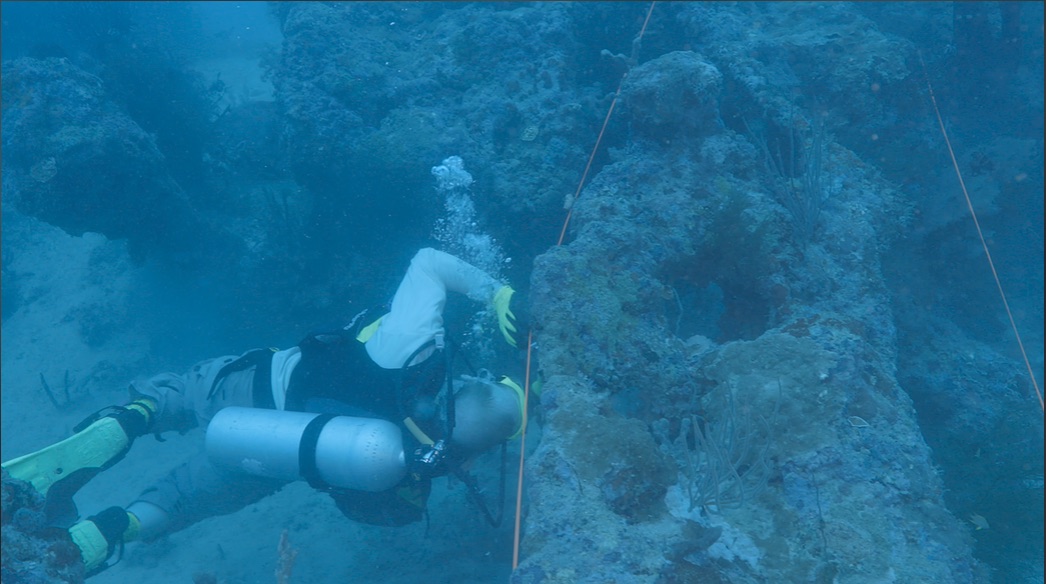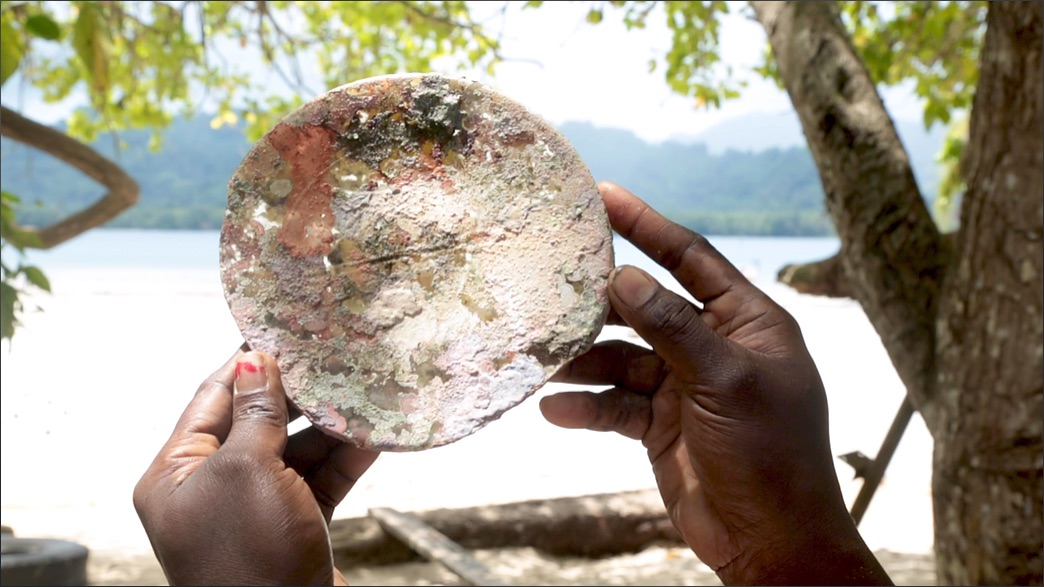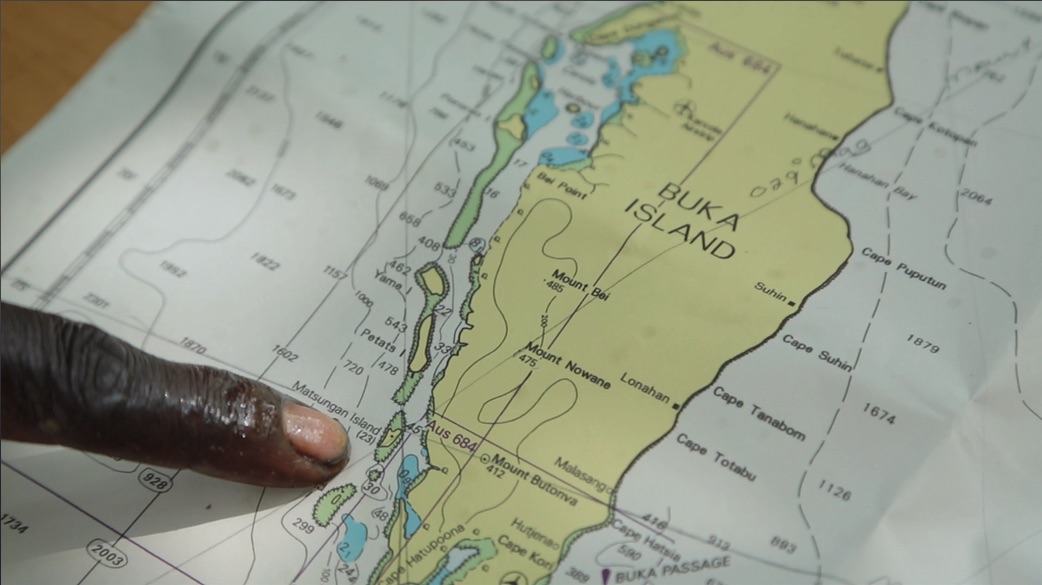Is This Amelia Earhart's Plane? Debris from Wreck Found Off Papua New Guinea

In the late 1930s, a little boy on a Papua New Guinean island saw a plane — its left wing engulfed in flames — crash onto the beach. The little boy told his elders, but they didn't believe him.
The tide quickly dragged the plane offshore and underwater, where it's now covered with coral. And it might not be just any plane: One amateur historian thinks it could belong to Amelia Earhart.
"We're still exploring to try to find out whose plane it is. We don't want to jump ahead and assume that it's Amelia's," said William Snavely, the director of Project Blue Angel, the group spearheading the project to identify the plane. "But everything that we're seeing so far would tend to make us think it could be." [In Photos: Searching for Amelia Earhart]
On a diving expedition in August 2018, divers with Project Blue Angel said the sunken plane matched certain characteristics of Earhart's plane, a Lockheed Electra 10E. The team also found a glass disc that could possibly be a light lens from the front of the plane, Snavely said.

However, much more analysis is needed, he said. The group now has a GoFundMe page to raise money for a second trip to Papua New Guinea. And experts still need to examine the glass, Snavely said.
"It's obviously glass that appears to be old and covered significantly with barnacles," Snavely told Live Science. "It has a rough shape and diameter that appears to be relatively consistent with lights that were on the plane back in the 1930s for Lockheed. But we don't know for sure if it's a Lockheed light. That's what we're getting checked right now."
Fiery crash
Snavely, a social worker who used to work for the state of Maryland, said he's been interested in Earhart since he was a kid, when he used to build model airplanes. He even had a toy replica of the Lockheed Electra 10E.
Sign up for the Live Science daily newsletter now
Get the world’s most fascinating discoveries delivered straight to your inbox.
Later, while studying up on Earhart's mysterious disappearance, he realized a key fact. Earhart and her navigator Fred Noonan were trying to circumnavigate the world, but they went missing on July 2, 1937, after they left Lae, New Guinea, for Howland Island, located between Hawaii and Australia.
Most Earhart sleuths were looking for the crash near Howland Island, but few had searched the beginning 70 percent of her route, Snavely realized. So, that's what he set out to do.
In 2005, he flew over to Rabaul, Papua New Guinea, with the plan of talking to locals who might have information about a mysterious plane crash. Almost immediately, Snavely met a corrections officer at his hotel who had knowledge of a crash that the little boy saw all those years ago. Apparently, another man free diving for sponges spotted the wreck in 1995, verifying the boy's account. (The once little boy was still alive in 1995 when the diver first spotted the plane, but has since passed away, so there's no way to verify his story.)
The corrections officer asked Snavely for five characteristics that set the Electra apart from other planes. That way, he could have the sponge diver revisit the wreckage to see if it matched up. Snavely rattled off some features: The plane had a twin engine, a twin tail, a door on the pilot's side, a loop on the front of it for navigation purposes and a spar for an antenna. [Up She Goes! 8 of the Wackiest Early Flying Machines]
To Snavely's surprise, the corrections officer later verified that the plane wreckage had all five of the features, Snavely said.

Deep dive
The wreckage sits off a small, inhabited island near the town of Buka on the eastern side of Papua New Guinea. Snavely's hypothesis largely rests on the premise that the Electra's gas tank wasn't filled to full capacity when Amelia and Noonan took off from Papua New Guinea. This, however, is subject to debate; there is no definitive evidence that would indicate how much fuel was put on board that day, according to Mary Lovell's book "The Sound of Wings: The Life of Amelia Earhart" (St. Martin's Griffin, 1989). According to some sources, the gas tank wasn't fully filled because the plane was already at its full-weight capacity. But, according to others, it was nearly filled, Lovell wrote in the book.
Assuming the tank wasn't filled enough, it's possible that Earhart and Noonan decided to turn the plane around after they ran into strong headwinds (meaning it took more gas than usual to fly). Perhaps the aviators realized they wouldn't make it to Howland Island and rerouted the flight, flying toward Buka, which had the closest known runway, Snavely said.
Then, during a tumultuous thunderstorm, it's possible Earhart crashed down on the island next to Buka, Snavely said.
How feasible is this?
There are plenty of ideas about what happened to Earhart, said Chris Williamson, the project director of the "Chasing Earhart" podcast, which explores the different hypotheses surrounding her disappearance.
The majority of these hypotheses fit into five main categories, Williamson said.
- The Electra crashed and sank into the vast Pacific Ocean. Or, perhaps, Earhart purposefully landed (ditched) the plane on the water, and then it sank.
- Earhart and Noonan were captured by the Japanese. Then, they either died in captivity or were executed.
- Earhart and Noonan became castaways on a distant island, perhaps on Nikumaroro (previously called Gardner Island). It's possible that they survived for some time. In this scenario, it's unclear who died first.
- Earhart was captured by the Japanese, but she didn't die. Instead, she was repatriated to the United States, where she took on the name of Irene Bolam. (This is disputed, however, by Bolam herself, according to The New York Times.)
- The Buka hypothesis, in which Earhart turned the plane around and then crashed into the island near Buka.
Williamson commended Snavely for his skeptical approach. "He's being very cautious about it," Williamson told Live Science. "He's not saying we found her, this is a slam dunk."
Instead, Snavely said he hopes to learn who perished in the Buka plane crash.
"We, at this point, are just interested right now in making an identification as to whose plane it is," Snavely said. "Somebody died in that plane, and we'd like to know who it was to be able to tell their families."
- Photos: The Incredible Life and Times of Amelia Earhart
- 10 Mysterious Deaths and Disappearances That Still Puzzle Historians
- The Sky's the Limit: 15 Key Milestones in Aviation History
Originally published on Live Science.

Laura is the archaeology and Life's Little Mysteries editor at Live Science. She also reports on general science, including paleontology. Her work has appeared in The New York Times, Scholastic, Popular Science and Spectrum, a site on autism research. She has won multiple awards from the Society of Professional Journalists and the Washington Newspaper Publishers Association for her reporting at a weekly newspaper near Seattle. Laura holds a bachelor's degree in English literature and psychology from Washington University in St. Louis and a master's degree in science writing from NYU.










